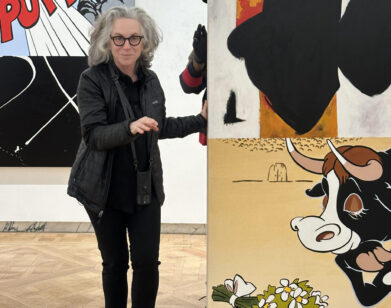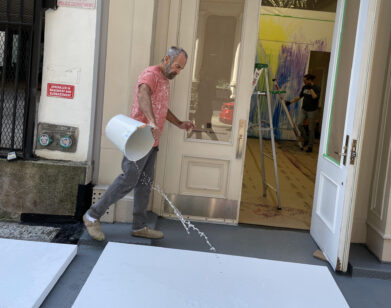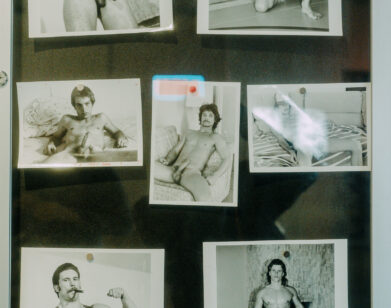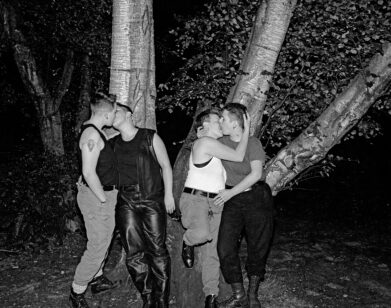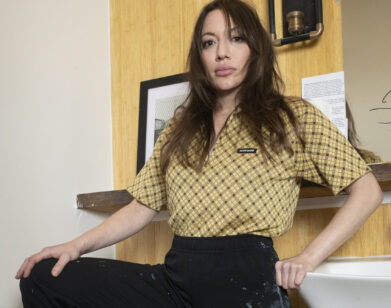Dushko Petrovich & Roger White
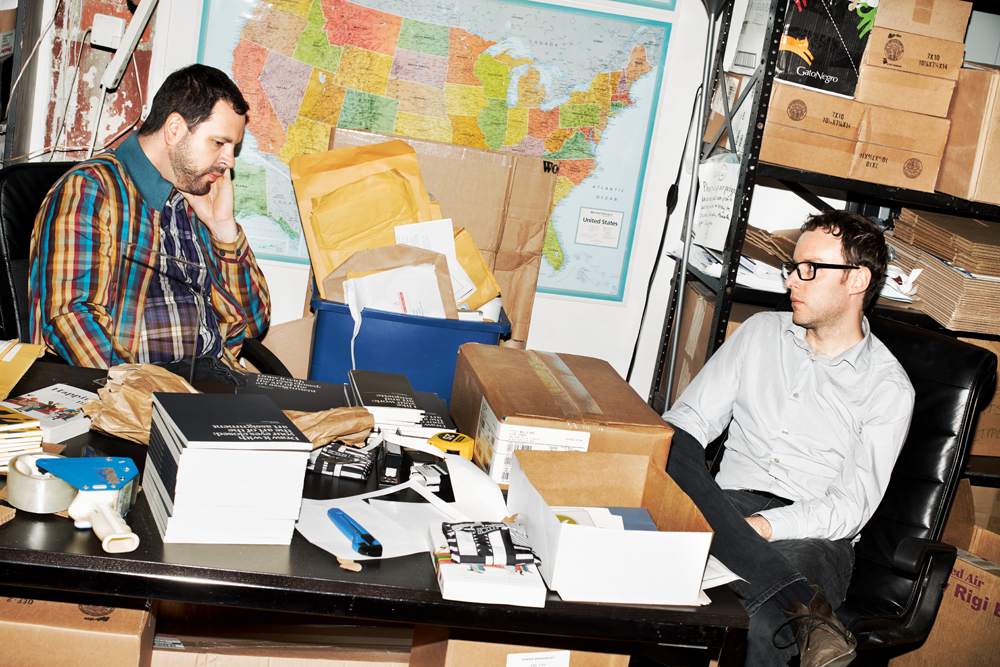
EDITORS OF PAPER MONUMENT DUSHKO PETROVICH AND ROGER WHITE AT THEIR OFFICE IN BROOKLYN, NEW YORK, OCTOBER 2014. ALL CLOTHING: PETROVICH AND WHITE’S OWN.
How did the idea of Paper Monument come about, and how does it connect to its sister publication n+1?
No one starts a periodical because they’re perfectly content with the existing options. In our case, the inspirational dissatisfaction came from seeing how much good writing and art couldn’t be slotted into either the glossy trade mags or the academic journals. We wanted to publish this high-quality material, the stuff that would otherwise slip through the cracks-or really the canyon-between these two prevailing formats. Dushko was an art critic for n+1‘s first two issues, and then he began editing pieces (including some by Roger) for their website before we started Paper Monument. Though we began as a separate entity, n+1 gave us a lot of advice, encouragement, and logistical support in the early years.
So many young art publications are purely digital. What value do you see in print as opposed to online?
There was an element of perversity in launching a print journal at the dawn of digital publishing-something we wanted to capture in the self-contradictory name Paper Monument. But the project is an attempt to slow things down a bit and put out writing that’s built to last. Somehow, focusing on the physical aspect helps us do that, maybe because we’re painters, or maybe because we grew up in the Gutenberg era. But we do put almost everything up on the internet as well.
How does being artists affect the curation of each issue?
Actually, the fact that we were once in bands together may have had a bigger impact on the way we organize things. When we put together the issues, for example, we think of them like albums. We also release them with the (in)frequency of albums! We’re pretty much the Hall and Oates of art publishing. We tend to cover things from the inside out. Which is to say we choose a topic that is of interest to us-the awkwardness of studio visits, the tricky nature of authority in art school-and then we present it candidly and, hopefully, intelligently enough that it ends up being of interest to people who aren’t strictly in the art world.
Paper Monument in the year 2050. What does it look like?
A subscription-based telepathy service where ideas are shared anonymously from person to person in the postapocalyptic art worlds? A samizdat-style underground publishing network whose outmoded technology evades our digital overlords? The first art magazine on Mars?

